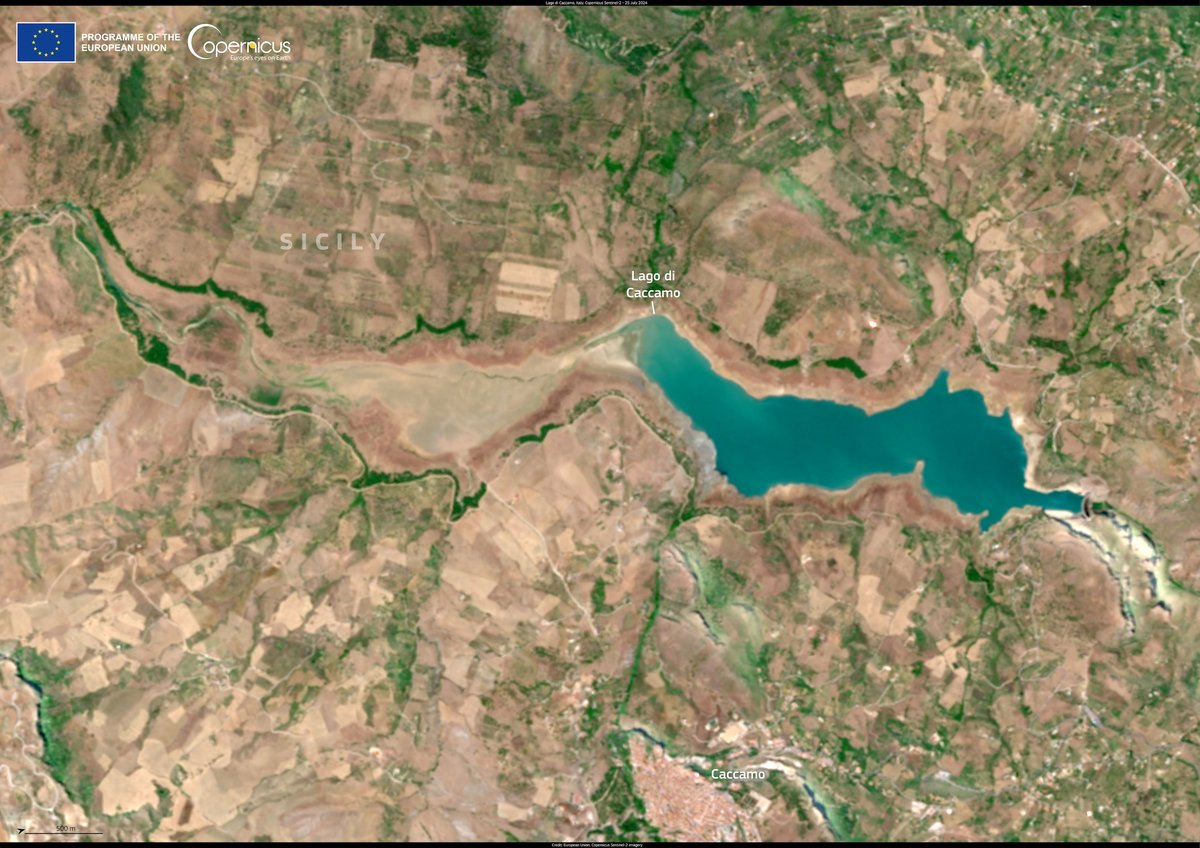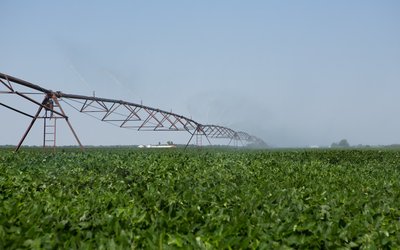Continents are losing freshwater to the oceans at an alarming rate
August 1, 2025

Photo: In 2024, Sicily (Italy) faced its worst drought in 20 years, with nearly empty reservoirs. Lake Caccamo used to be one of the largest in Sicily, but reached only 18 million cubic metres in 2024 in comparison to its capacity of 100 million cubic metres. Credit: European Union, Copernicus Sentinel-2 imagery.
Freshwater is disappearing from the Earth at alarming rates. These losses are due to the combined effects of climate change, overconsumption and drought. As a result, continents are drying, freshwater availability is shrinking, and sea level rise is accelerating. These dramatic conclusions were drawn from a new study based on satellite observations from the period 2002-2024. The observations revealed changes in the volumes of water stored on land – ‘terrestrial water storage’ – including water in rivers and lakes, groundwater and soil moisture, and ice and snow. The results cover the land of all continents, excluding the ice caps of Greenland and Antarctica.
Twice the size of California
The rates of drying are unprecedented. Dry regions are drying up faster than wet areas are getting wetter. At the same time, the area experiencing drying has increased, while the area experiencing wetting has decreased. The continental areas experiencing drying are increasing by about twice the size of California each year. The loss of freshwater on Earth is driven primarily by high-latitude water losses in Canada and Russia – most likely due to ice and permafrost melt –, by the extreme Central American and European droughts of the past several years, and by continued global groundwater depletion.
Four mega-drying regions
The increase of the areas of dry regions has connected several regional freshwater loss ‘hot spots’ to form four continental-scale mega-drying regions, all located in the Northern Hemisphere: (1) large swaths of Alaska and northern Canada; (2) northern Russia; (3) southwestern North America and Central America; (4) a massive region spanning from North Africa to Europe, through the Middle East and Central Asia, to northern China and South and Southeast Asia.
Nearly 6 billion people
The loss of freshwater affects a large part of the global population. Roughly 75% of the global population – nearly 6 billion people – live in the countries that have been losing freshwater over the past two decades. Key contributors to the decline of freshwater stored on land include melting glaciers, the increasing severity of drought, the loss of surface water in rivers and lakes, and groundwater depletion. A lot of these losses are non-renewable water. Especially many groundwater reservoirs are overexploited and not replenished during wet years.
The largest single contributor (68%) to the loss of freshwater stored on land comes from groundwater, followed by surface water (18%), soil moisture (9%), and snow (5%). The long-term depletion of groundwater reservoirs is a result of the decline of freshwater in rivers and lakes. Society has become more reliant on groundwater. The consequences of global groundwater depletion include reduced irrigation water supply and threats to agricultural productivity, and damage to biodiversity.
Contributions to sea level rise
The freshwater lost from the continents contributes to sea level rise. Over the last two decades, this contribution has exceeded the contribution of the individual ice sheets of Greenland and Antarctica. 44% of sea level rise due to the increase in ocean mass was freshwater lost from the continents, according to this study; the contributions of Greenland and Antarctica was about 37% and 19%, respectively.
Call to action
According to the authors of this study, continental drying will likely continue or increase in the coming decades. Freshwater availability will continue its current decline.
‘The expansion of continental drying, the increase in extreme drying, and the implications for shrinking freshwater availability and sea level rise should be of paramount concern to the general public, to resource managers, and to decision-makers around the world’, the researchers warn. In particular ‘protecting the world’s groundwater supply is paramount in a warming world and on continents that we now know are drying’.
Source: Chandanpurkar et al., 2025. Science Advances 11, eadx0298.








